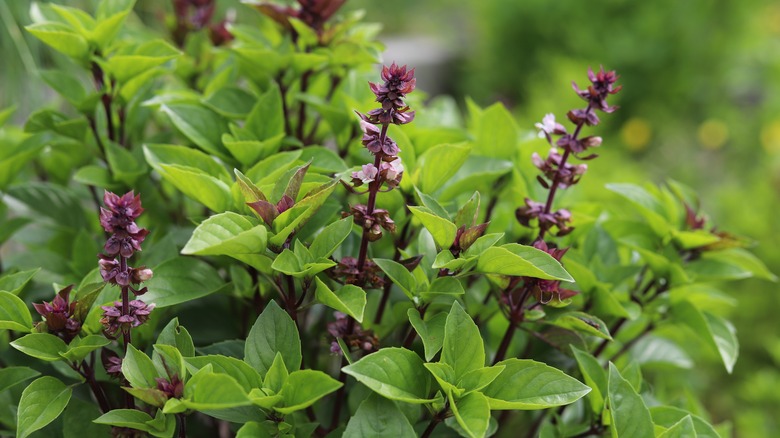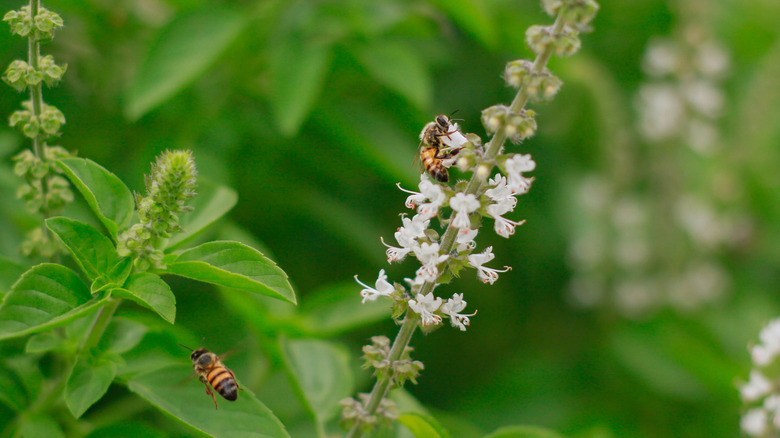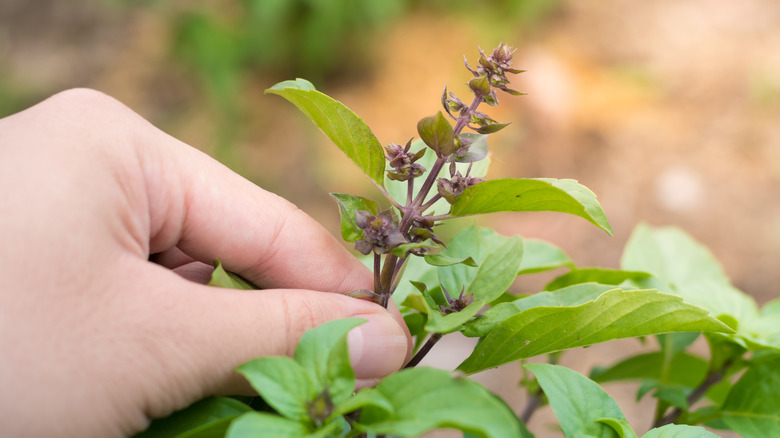Why You Don't Want Your Basil Plant To Flower (And What To Do If It Does)
Most of the time, it is very exciting to go out to your garden and notice that a plant has started flowering. It means new growth and can lead to delicious fruits and vegetables, if the plant is pollinated. Unfortunately, this is not the case for basil plants and actually means quite the opposite. Flowering is part of the last stage in a basil plant's life cycle and means that it will soon stop producing leaves. Of course, this is unfortunate if you use basil in the kitchen. Another negative side effect of a flowering basil plant is that the flavor of the leaves will start to change. The once savory herb becomes bitter and less appetizing.
Because of this, clip the flowers off before they bloom to encourage more growth and longevity. If you catch the plant soon enough before too many flowers bloom, you may still be able to use some of the leaves in the kitchen. It's also important to regularly prune your basil plant so that it continues producing leaves and doesn't bloom too soon.
Why your plant is flowering
Basil, a member of the mint family, is a relatively easy plant to grow and take care of. It thrives in warm weather months during the late spring and summer. The annual has four stages of life: seedlings, juvenile, transition, and reproductive. The first two stages represent the early parts of life, the transition stage is an ideal time to harvest, and the reproductive stage is the final stage. Typically, basil plants begin the reproductive phase of their life cycle during the middle to late months of summer. The process requires an adequate amount of energy from the sun and a warm climate and begins once these requirements are met.
At this point, once the flowers begin to bloom, the plant will divert its focus to reproduction and stop forming new leaves. The flowers form, bloom, and are pollinating, resulting in the development of new seeds for gardeners to collect for the following summer season. Though a positive and natural process, it can often come earlier than anticipated and catch you off guard. Unfortunately, once flowers begin to bloom on a basil plant, the taste of the leaves soon becomes bitter. Along with inedible leaves, flowering means that cuttings from a basil plant can no longer be used for propagation.
What to do when flowering starts
Basil plant flowers come in a variety of colors including dark purple, hot pink, and bright white. Up against the lush green of basil leaves, they are pretty easy to spot, and once you notice these blooms forming on your plant, you have two options. You can either leave them be and allow the natural process to continue, or you can intervene and extend your basil plant's growth.
If you are looking to delay the reproductive process, remove the flowers as soon as you see them. Keep a closer eye on your plant in the middle and late summer months to ensure that you spot and pinch them off before they bloom. This will prevent any bitter taste from taking over your basil. Any flowers you pluck don't have to go to waste, either. While they aren't serving their original purpose, the florals make great garnishes and beautiful vase flowers. In fact, they can even be used to make edible oils, vinegar, and teas.


